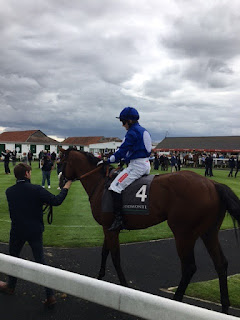Understanding the Basics of Odds
Before we jump into the specifics of horse racing odds, it's crucial to grasp the fundamental concept. Odds represent the probability of a particular outcome occurring. In horse racing, these odds are a way of quantifying the chances of each horse winning a race. For newcomers, deciphering the odds may seem daunting, but fear not – we'll guide you through it.
Decoding Fractional Odds
Fractional odds are a common format in horse racing, presented as a fraction like 5/1 or 2/7. The first number (numerator) represents the potential profit, while the second number (denominator) signifies the amount staked. For instance, in 5/1 odds, a $1 bet could yield $5 in profit, click here, if you would like to win big. Understanding this ratio is crucial for making sense of fractional odds.
Embracing Decimal Odds
Decimal odds offer a more straightforward alternative. Presented as, for example, 2.50, they represent the total amount returned for every $1 wagered, including both the stake and profit. Converting fractional odds to decimals is a breeze – just add 1 to the fractional odds. So, 5/1 in fractional becomes 6.00 in decimal.
Unravelling Moneyline Odds
If you encounter odds expressed as +200 or -150, you're dealing with moneyline odds, the American way of presenting betting lines. Positive numbers indicate potential profit on a $100 bet, while negative numbers reveal the amount needed to wager to secure a $100 profit. Uncomplicating these odds makes them a valuable tool for strategic betting.
Calculating Payouts
Knowing how to calculate potential payouts is vital for any aspiring bettor. Whether dealing with fractional, decimal, or moneyline odds, the process is straightforward. Multiply the stake by the odds to determine potential profit and add the stake to find the total payout. This simple calculation empowers bettors to make informed decisions.
Practical Tips for Betting
Armed with a foundational understanding of odds, it's time to venture into the world of betting. Assessing risk, managing finances, and making well-informed bets are key strategies. Researching the horses, considering track conditions, and staying informed about jockeys and trainers contribute to successful betting experiences.
Conclusion
In conclusion, horse racing odds, though initially perplexing, become a powerful tool once decoded. Fractional, decimal, and moneyline odds all offer unique insights into the betting landscape. As you venture into the world of horse racing, armed with this newfound knowledge, remember that informed bets make for a more enjoyable and potentially lucrative experience at the racetrack. Happy betting!
Photo: J. Coote (All Rights Reserved)


No comments:
Post a Comment